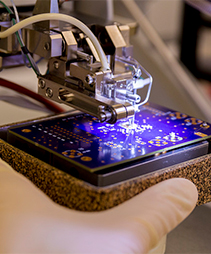
A technician conducts cell culture experiments at an I-Mab research and development center in Shanghai. [Photo provided to China Daily]
Adequate labor force
According to the National Bureau of Statistics, the Chinese mainland has a registered population of 1.41175 billion by the end of 2022. The country's working-age population, aged between 16 and 59 years old, was 875.6 million in 2022, accounting for 62 percent of the nation's total population and providing a key foundation for economic development. The country's population is still "young and vibrant", and a falling population does not necessarily mean that the demographic dividend is lost.
High-quality workforce
According to the Ministry of Education, the average number of years of schooling among the working-age population is up to 10.9 years. The average years of education of China's new labor force now exceeds 13.8 years, which is equivalent to the first year of college.
The Seventh National Population Census says that there were 218.36 million persons with a university education. Compared with 2010, the number of people with a university education went up from 8,930 persons to 15,467 persons per 100,000 persons, and the average years of schooling for people aged 15 and above increased from 9.08 years to 9.91 years. In 2023, China is expected to see a record 11.58 million college graduates.
China has continuously invested in the development of professional technical human resources and the training of high-skilled talents, supplying enterprises with a sufficient number of high-quality talents. As of the end of 2021, China was home to 33.42 million students acquiring skills in 11,300 vocational education institutions.
Research and innovation capabilities
China ranked 11th among 132 economies in the 2022 edition of the Global Innovation Index, released by the World Intellectual Property Organization, and ranking first among the upper middle-income economies .
China's spending on research and development climbed 10.4 percent to 3.09 trillion yuan ($456 billion) in 2022, accounting for 2.55 percent of China's gross domestic product, according to the nation's National Bureau of Statistics.
China has the world's largest human resources pool in science and technology, with 112 million trained professionals by the end of 2020, according to a report published by the National Academy of Innovation Strategy of the China Association for Science and Technology.
The structure of China's sci-tech talent pool has become more balanced in recent years, with 73.9 percent of them at age 39 or younger at the end of 2019. As for their level of education, by the end of 2019 over 93 percent had undergraduate or specialist degrees.
In 2022, China authorized 798,000 invention patents, bringing the country's total number in this regard to 4.21 million. The industrialization rate of China's patents for valid inventions was 36.7 percent. In February 2022, the WIPO announced the 2021 international patent applications (under Patent Cooperation Treaty, or PCT), which showed that China submitted the most international patent applications through the PCT, with a total number of 69,540.
![]()

















